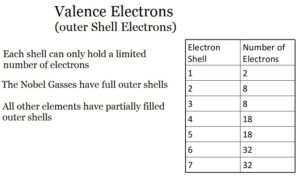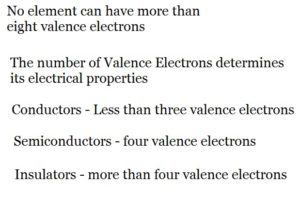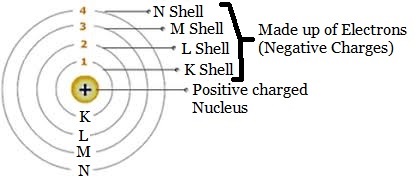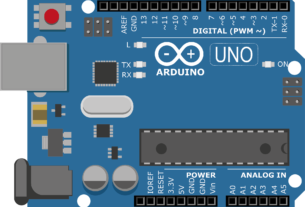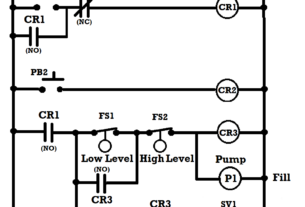The outer shell of the Atom is referred to as the Valence shell. The number of electrons in the Valence shell determines the electrical characteristics of a material. Electrical Current is defined as electrons in motion. A conductor is a material through which electric current can pass. An insulator is a substance or device that does not readily conduct electricity. A semiconductor is a solid substance. It has a conductivity between that of an insulator and that of a conductor. Materials made from Atoms with less than four valence electrons are termed, Conductors. Those with four are semiconductors. Those with more than four are insulators.
